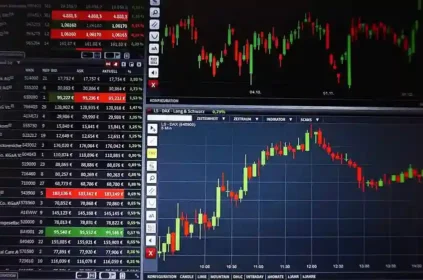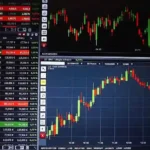In the fast-paced world of Forex trading, staying ahead of the curve requires continuous learning and adaptation. For developers of Forex robots, embracing a culture of continuous learning is essential for keeping pace with evolving market dynamics, technological advancements, and trading strategies. This article explores the significance of continuous learning in Forex robot development, delves into key areas for ongoing improvement, and discusses strategies for fostering a culture of learning to achieve excellence in algorithmic trading.
The Dynamics of Forex Robot Development:
Forex robot development is a dynamic and iterative process that involves designing, testing, and refining automated trading algorithms to achieve optimal performance in the Forex market. Developers leverage a variety of techniques, including machine learning, statistical analysis, and mathematical modeling, to create algorithms that can analyze market data, generate trading signals, and execute trades with speed and precision. However, the Forex market is constantly evolving, influenced by factors such as economic indicators, geopolitical events, and market sentiment, which necessitates continuous learning and adaptation to stay competitive.
The Significance of Continuous Learning:
Market Dynamics:
The Forex market is highly dynamic and subject to constant change, driven by economic, political, and social factors. Continuous learning enables Forex robot developers to stay abreast of market trends, understand changing dynamics, and adapt trading strategies to capitalize on emerging opportunities and mitigate risks effectively. By staying informed about macroeconomic indicators, central bank policies, and geopolitical developments, developers can enhance the predictive power and effectiveness of Forex robots in navigating market fluctuations.
Technological Advancements:
The field of algorithmic trading is continually evolving, with advancements in technology, data analytics, and computational resources shaping the landscape. Continuous learning allows Forex robot developers to explore new technologies, tools, and methodologies that can enhance algorithmic trading capabilities, improve execution speed, and optimize performance. By staying updated on developments in artificial intelligence, cloud computing, and high-frequency trading, developers can leverage cutting-edge techniques to develop more robust and efficient Forex robots.
Trading Strategies:
Successful Forex trading requires a deep understanding of trading strategies, risk management techniques, and market psychology. Continuous learning empowers Forex robot developers to explore and refine trading strategies, experiment with different approaches, and adapt to changing market conditions. By studying historical data, backtesting strategies, and analyzing trading performance, developers can identify patterns, trends, and anomalies that inform the design and optimization of Forex robot strategies for greater profitability and risk control.
Areas for Continuous Learning in Forex Robot Development:
Technical Analysis:
Technical analysis plays a crucial role in Forex trading, providing insights into price patterns, trends, and support/resistance levels. Continuous learning in technical analysis enables Forex robot developers to identify reliable chart patterns, apply technical indicators effectively, and interpret price action to generate accurate trading signals. By mastering technical analysis techniques, developers can enhance the precision and effectiveness of Forex robots in identifying profitable trading opportunities and managing risk.
Fundamental Analysis:
Fundamental analysis involves analyzing economic indicators, geopolitical events, and central bank policies to assess the fundamental factors driving currency movements. Continuous learning in fundamental analysis enables Forex robot developers to interpret economic data releases, anticipate market reactions, and incorporate fundamental factors into trading strategies. By staying informed about key economic events, geopolitical risks, and market sentiment, developers can develop Forex robots that are better equipped to navigate fundamental drivers of currency markets and make informed trading decisions.
Risk Management:
Effective risk management is essential for preserving capital and achieving long-term success in Forex trading. Continuous learning in risk management enables Forex robot developers to implement robust risk management techniques, such as position sizing, stop-loss orders, and portfolio diversification, to mitigate downside risk and protect against adverse market movements. By understanding risk management principles and best practices, developers can design Forex robots that prioritize capital preservation, minimize drawdowns, and optimize risk-adjusted returns.
Strategies for Fostering Continuous Learning:
Stay Informed:
Stay updated on industry trends, market developments, and technological advancements through relevant publications, forums, and conferences. Engage with industry experts, participate in online communities, and follow reputable sources for insights and updates on Forex trading and algorithmic trading techniques.
Experiment and Iterate:
Experiment with different trading strategies, algorithms, and risk management techniques to gain practical experience and insights into Forex trading dynamics. Iterate on Forex robot designs, test hypotheses, and analyze performance metrics to identify strengths, weaknesses, and areas for improvement.
Collaborate and Share Knowledge:
Collaborate with peers, mentors, and fellow developers to exchange ideas, share experiences, and learn from each other’s successes and failures. Participate in collaborative projects, contribute to open-source initiatives, and engage in knowledge-sharing platforms to leverage collective expertise and accelerate learning in Forex robot development.
Embrace Lifelong Learning:
Embrace a mindset of lifelong learning and continuous improvement in Forex robot development. Invest in ongoing education, pursue certifications, and explore specialized training programs in Forex trading, algorithmic trading, and quantitative analysis to expand knowledge and skills in relevant areas.
Conclusion:
Continuous learning is fundamental to success in Forex robot development, enabling developers to adapt to evolving market conditions, leverage technological advancements, and refine trading strategies for optimal performance. By staying informed about market dynamics, mastering technical and fundamental analysis, and implementing robust risk management practices, developers can create Forex robots that are better equipped to navigate the complexities of the Forex market and achieve consistent profitability. By fostering a culture of continuous learning and innovation, developers can stay ahead of the competition and unlock new opportunities for success in algorithmic trading.















